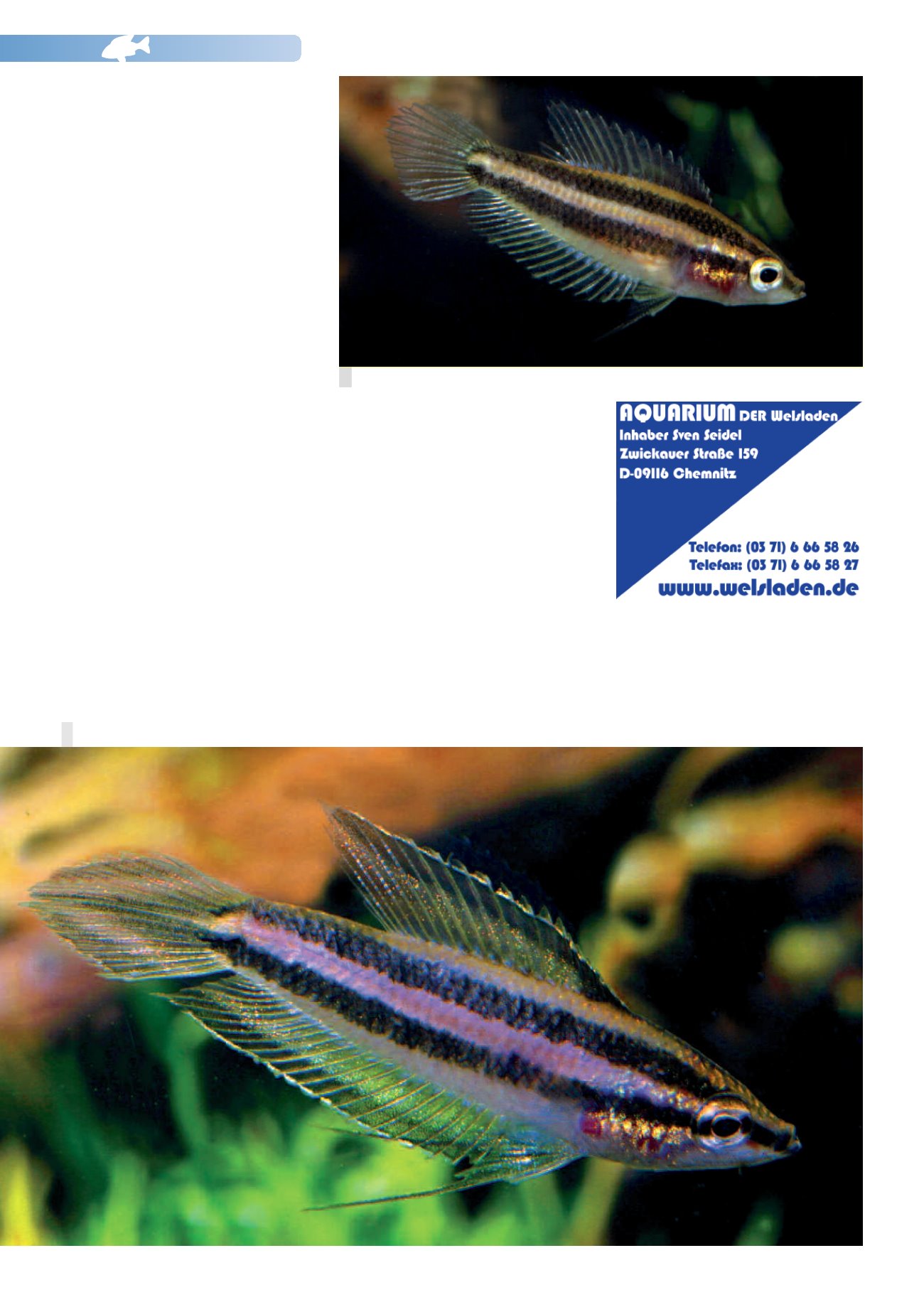
NEWS106
12
Newly imported female
Parosphromenus
sp.“Ampah”.
Photo:FrankSchäfer
Newly importedmale
Parosphromenus
sp.“Ampah”.
Photo:FrankSchäfer
enjoying them for 5-6 years. Specialists
have somewhat differing views as regards
thecorrectwater temperature.Someswear
by temperatures of around 22 °C (room
temperature),whileothersprefer tempera-
tures2-3 °Chigher (at least forbreeding).
Threatenedwithextinction
Licorice gouramis are usually exceptionally
commonwhere theyoccur.Theycanalmost
becomparedwithpickingmushrooms–once
you’ve found one then you will find even
more.For this reason the (inanycasecompa-
ratively limited) collectingofwild individuals
fortheaquariumrepresentsnothreattothese
fishes.Butthenaturalhabitatsofthesedainty
little fishes,namely thesmallblackwaterstre-
amsthattrickle fromthepeatbogsand jung-
les,arebeingdestroyedatanalarmingrate.As
aresultnotonly licoricegouramisbutalsoen-
tirecommunitiesofanimalsandplantsare in
serious danger.Where just a few years ago
therewasstillunspoilednaturetherearenow
endlessexpansesofoil-palmplantations.The
chemicalcompositionofthewater inthestre-
amschangessomuch insuchplantationsthat
blackwaterfishescanno longersurvivethere.
There is adedicated conservationbreeding
program for licorice gouramis, popularly
knowntoenthusiastsas"Paros" forshort,and
you can learnmore about this at
rosphromenus-project.org.Hereyouwill also
find further detailed hints onmaintenance
andbreeding,aswellasa lotofadditional in-
teresting information.
Onlyvery local in theirdistribution
The specialization on blackwater biotopes
alsomeans that thedistributions of licorice
gouramis–membersofthegenusare found
ontheMalayanpeninsula,the largeSunda Is-
lands of Sumatra and Borneo, as well as a


